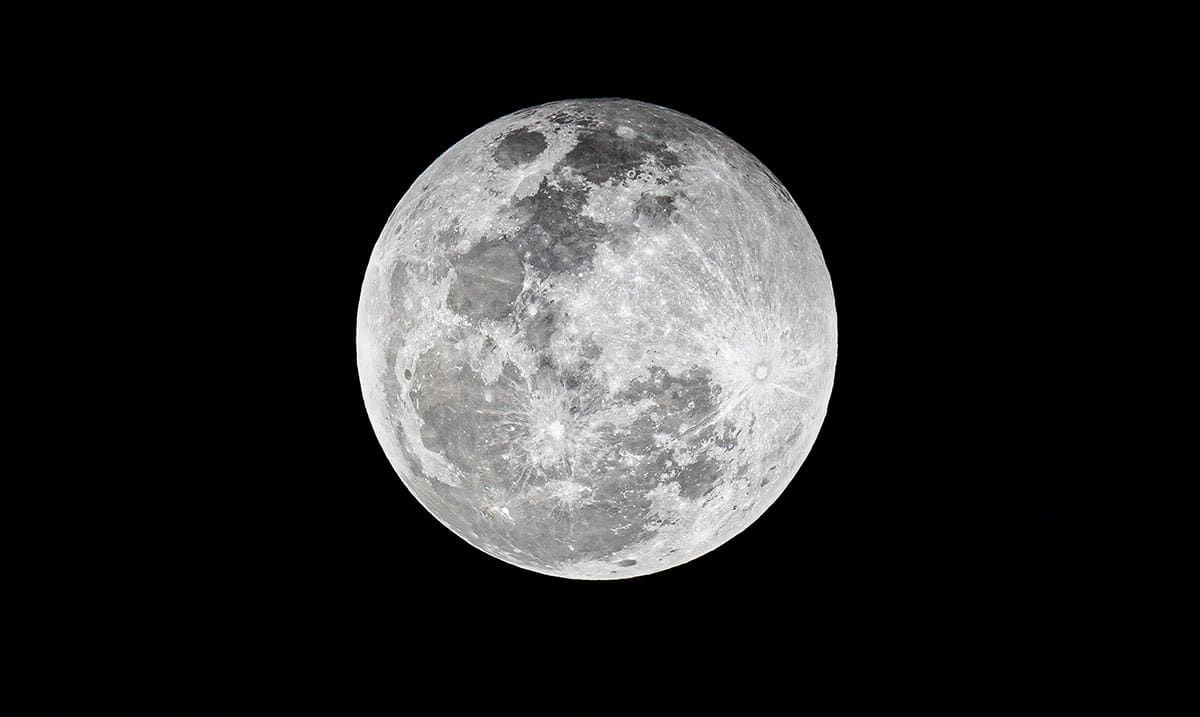Throughout the year, we typically experience the full moon each month, with each being given a unique and special name. These names are based upon Native American belief and other folklore, with each having its specific theme.
The moon cycles from new to full every 28 days. And the full moon represents the culmination of a cycle. Below, I have listed the full moons, with their names, and what each name means. I have also listed the date on which the full moon will take place each month of this year.
For many ancient cultures, keeping up with the full moon was considered to be a method of timekeeping, much like the solar calendar. And, depending upon the full moon and when it fell, provided them with insights into how they should prepare for that time of year.
According to the Almanac, here are the moons, their names, and what they mean.
January: Wolf Moon (January 17, 2022)
During the typical timing of the full wolf moon, wolves are heard howling much louder and more regular than normal. In the past, they believed this was due to hunger, however, in actuality, wolves howl for several reasons. Some of those include claiming territory, finding other pack mates, or meeting up to hunt.
Other names: Canada Goose Moon, Frost Exploding Moon, Spirit Moon
February: Snow Moon (February 16, 2022)
During February, it is typically cold and even snowy in many areas in North America. Due to that, many natives referred to the February full moon as the snow moon.
Other names: Bald Eagle Moon, Bear Moon, Eagle Moon
March: Worm Moon (March 18, 2022)
In the springtime, Earth Worms can be found in great quantity in the soil. However, it is also thought that this name refers to fresh larvae which can be found emerging from tree bark during March.
Other names: Crow Comes Back Moon, Sore Eye Moon
April: Pink Moon (April 16, 2022)
The April full moon was named after a type of early blooming wildflower that emerges during April. The name of the Wildflower is Phlox subulata or moss pink.
Other names: Breaking Ice Moon, Budding Moon of Plants and Shrubs, Frog Moon
May: Flower Moon (May 16, 2022)
Much like the Pink Moon, the Flower Moon is also named due to the emerging flowers during May. Because flowers can be found in abundance during May, the name fits.
Other names: Budding Moon, Egg Laying Moon, Planting Moon
June: Strawberry Moon (June 14, 2022)
In June, strawberries begin to ripen in the northeastern region of the U.S. Due to this, natives would mark the time by referring to the moon as the strawberry moon.
Other names: Berries Ripen Moon, Birth Moon, Blooming Moon
July: Buck Moon (July 13, 2022)
Each year, male deer (Bucks) shed their antlers. In July, they begin to grow back, which is why the July full moon is called the Buck Moon.
Other names: Thunder Moon, Hay Moon, Raspberry Moon
August: Sturgeon Moon (August 11, 2022)
As you may have noticed, many of these months provide insight into the types of food most readily available during that particular time. The full sturgeon moon shows when the sturgeon of the Great Lakes and Lake Champlain were most likely to be readily caught.
Other names: Black Cherries Moon, Corn Moon, Harvest Moon
September: Corn Moon (September 10, 2022)
During September, corn was harvested. They named the September moon to mark that time, but it was also known as a harvest moon or hay moon. These were very important crops to the natives.
Other names: Autumn Moon, Harvest Moon, Hay Moon
October: Hunter Moon (October 9, 2022)
In previous months, the deer would become fattened, making them, and other games, perfect to be hunters during October. To mark the occasion, the October moon was labeled the Hunter moon.
Other names: Falling Leaves Moon, Drying Rice Moon, Migrating Moon
November: Beaver Moon (November 8, 2022)
In November, Beavers would finish their preparations for winter. Once completed, they would then retreat to their dams and lodges.
Other names: Deer Rutting Moon, Freezing Moon, Frost Moon
December: Cold Moon (December 7, 2022)
As Winter began, the days would become increasingly shorter and colder. In turn, the natives named the moon to mark those cold days.
Other names: Drift Clearing Moon, Hoar Frost Moon, Mid-Winter Moon

